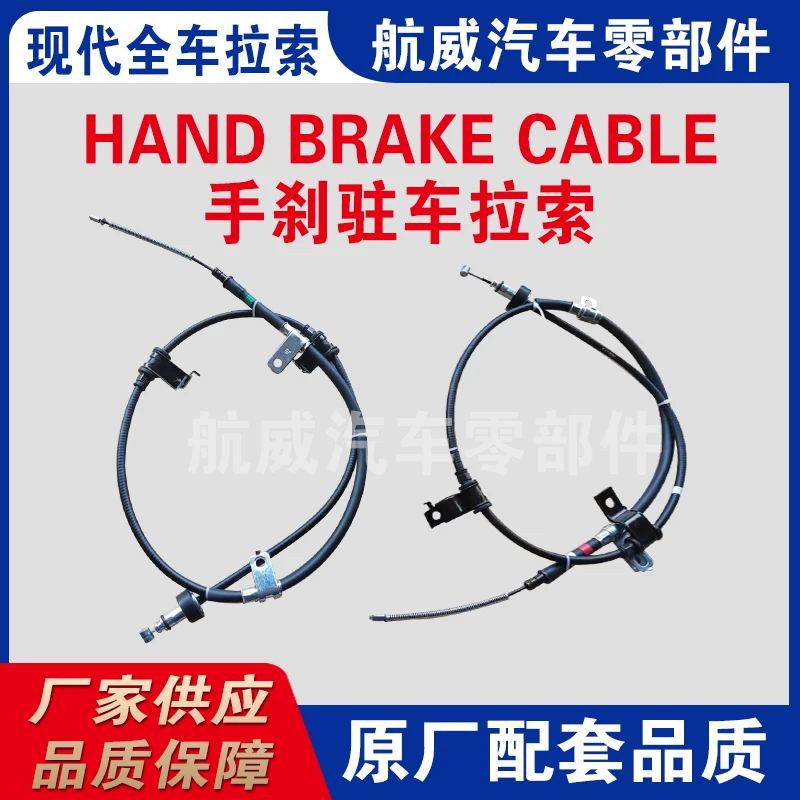Trailer Handbrake Cable Installation and Maintenance Guide for Optimal Performance
Understanding the Trailer Handbrake Cable Importance and Maintenance
The trailer handbrake cable is a crucial component in ensuring the safety and functionality of trailer systems. These cables are designed to engage and disengage the trailer's brakes, providing additional control when parked or during emergencies. Understanding the function and maintenance of trailer handbrake cables can help users extend the lifespan of their trailers and enhance towing safety.
Function of the Trailer Handbrake Cable
The primary function of the trailer handbrake cable is to connect the handbrake lever, typically located on the tow vehicle or the trailer itself, to the braking system of the trailer. When you pull the handbrake lever, the cable pulls on the brake mechanism, applying pressure to the brake pads or shoes, thereby slowing or stopping the trailer. This ensures that the trailer remains secured in place when parked on an incline or during loading and unloading operations.
There are generally two types of braking systems on trailers electric and hydraulic. Depending on the system in use, the handbrake cable may operate differently. In electric braking systems, the cable might engage an electronic actuator that applies the brakes, while hydraulic systems may require a direct mechanical linkage to the brake assembly.
Importance of Proper Functioning
The functionality of the handbrake cable cannot be overstated. A well-functioning handbrake cable ensures that the trailer remains stationary when parked, significantly reducing the risk of rollaways, which can lead to accidents, property damage, and injury. Furthermore, in emergency situations, a reliable handbrake is vital for safely bringing the trailer to a stop.
Regular maintenance checks of the handbrake cable are essential for maximizing its effectiveness. Over time, cables can suffer from wear and tear, especially if exposed to environmental elements such as moisture, dirt, and road salt. If a handbrake cable becomes frayed, corroded, or damaged in any way, it can lead to complete brake failure, posing significant risks during operation.
Maintenance Tips
trailer handbrake cable

To ensure the longevity and efficiency of trailer handbrake cables, consider the following maintenance tips
1. Regular Inspections Periodically inspect the handbrake cable for signs of wear or damage. Look for fraying, rust, or excessive slack, which could indicate that the cable needs replacing or adjusting.
2. Lubrication Applying a suitable lubricant to the cable and its connecting points can help reduce friction and prevent corrosion. Make sure to use a product that is compatible with the materials of the cable to avoid deterioration.
3. Cleaning Keep the cable clean from dirt and debris, especially in winter months when road salt can cause corrosion. A simple wash with soapy water followed by a thorough rinse can help maintain the cable's integrity.
4. Tension Adjustment Ensure that there is proper tension on the handbrake cable. If the cable is too loose, it will not effectively engage the brakes. Some trailers have an adjustment mechanism that allows for easy tension modifications.
5. Replacement If the cable shows significant wear or has been involved in an incident, it’s prudent to replace it promptly. Consult the trailer's user manual for specifications on the correct cable type and installation procedures.
Conclusion
The trailer handbrake cable plays a pivotal role in towing safety and trailer functionality. By understanding its operation and adhering to a regular maintenance routine, trailer owners can ensure safe usage and avoid potential calamities caused by brake failure. A properly maintained handbrake cable contributes not only to the reliability of the trailer but also enhances the overall confidence of the towing experience. Remember, safety on the road begins with thorough checks and proactive maintenance of all towing equipment.
-
Upgrade Your Control with Premium Throttle CablesNewsAug.08,2025
-
Stay in Control with Premium Hand Brake CablesNewsAug.08,2025
-
Experience Unmatched Performance with Our Clutch HosesNewsAug.08,2025
-
Ensure Safety and Reliability with Premium Handbrake CablesNewsAug.08,2025
-
Enhance Your Vehicle with High-Performance Clutch LinesNewsAug.08,2025
-
Elevate Your Ride with Premium Gear CablesNewsAug.08,2025
